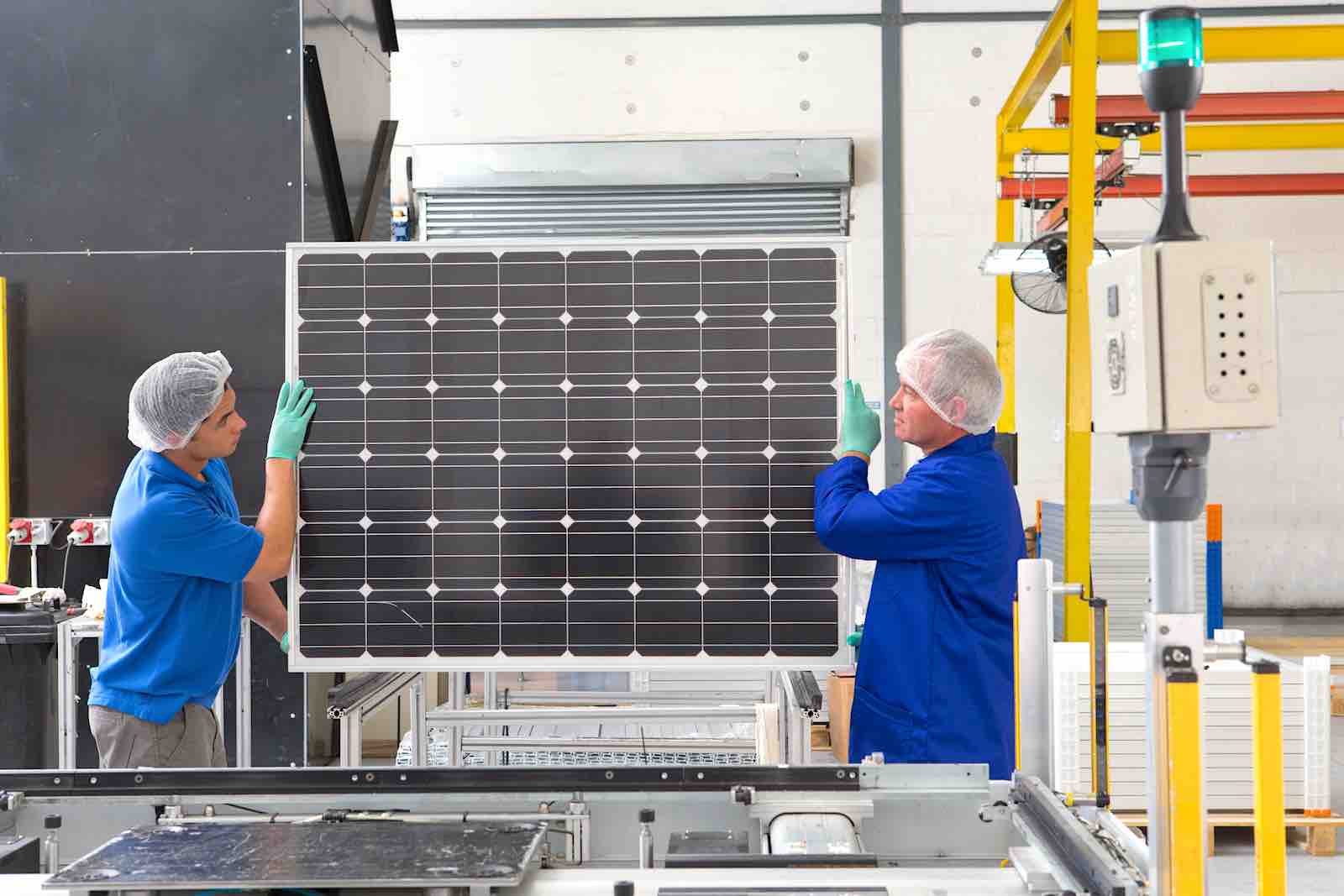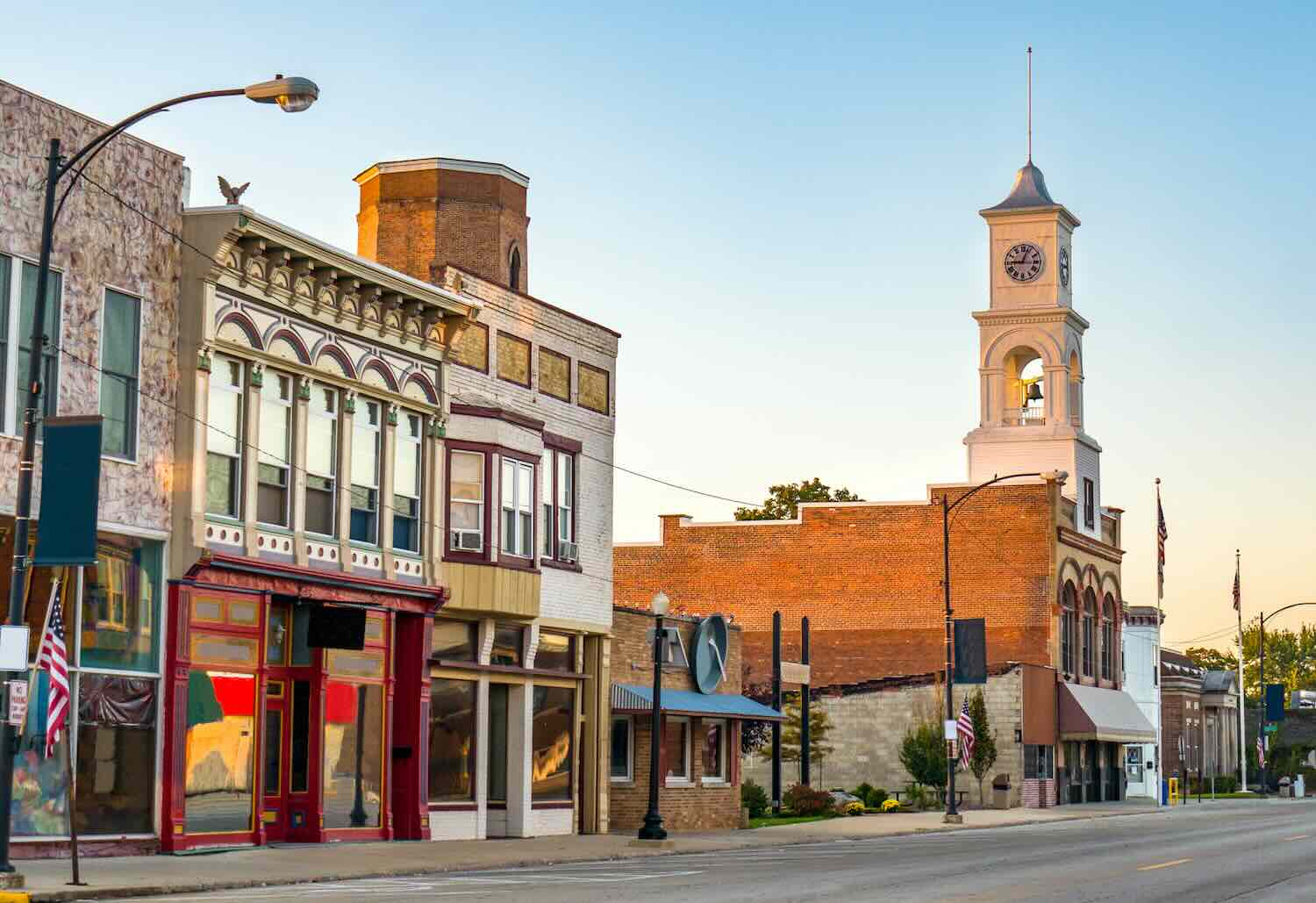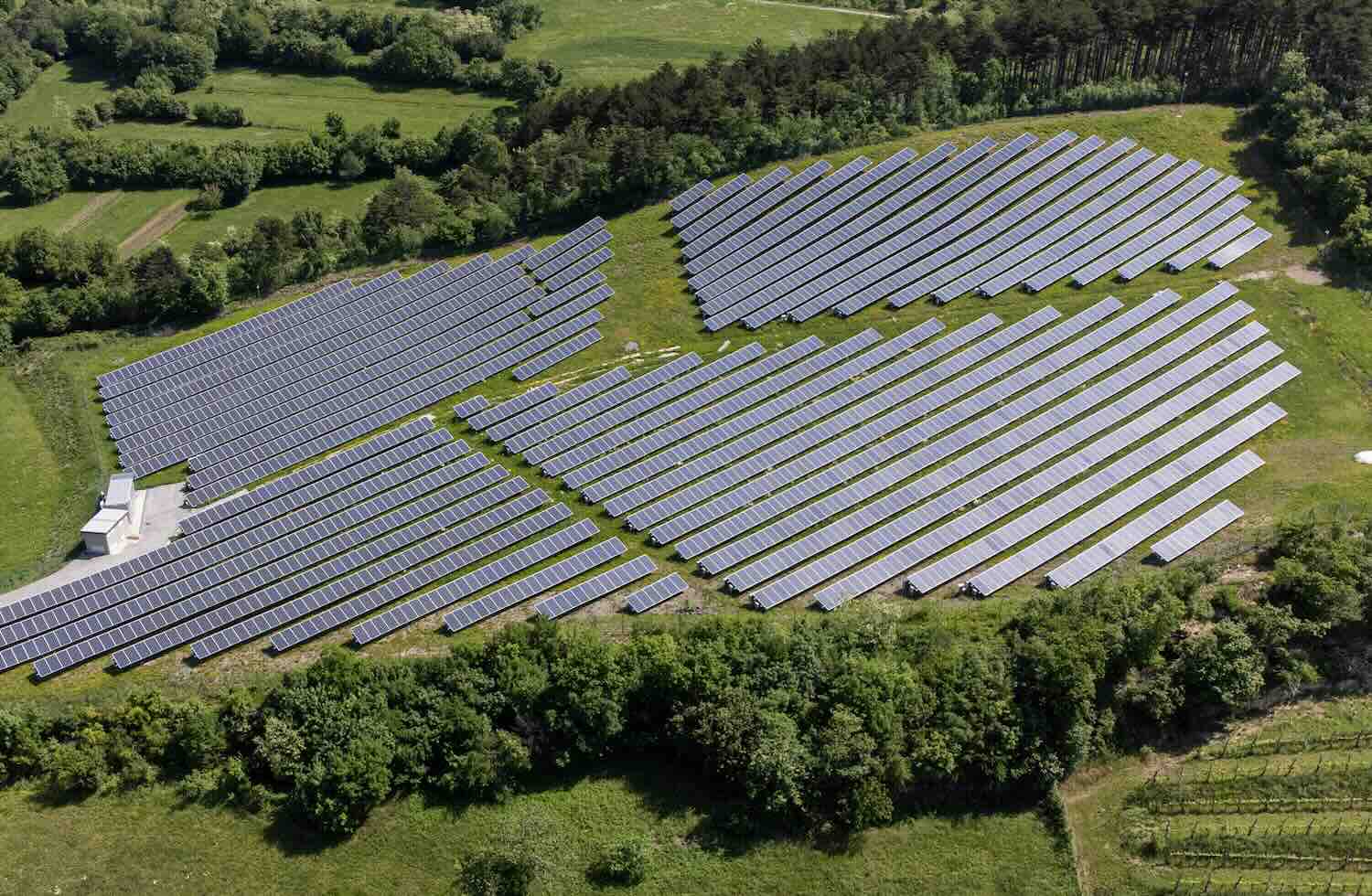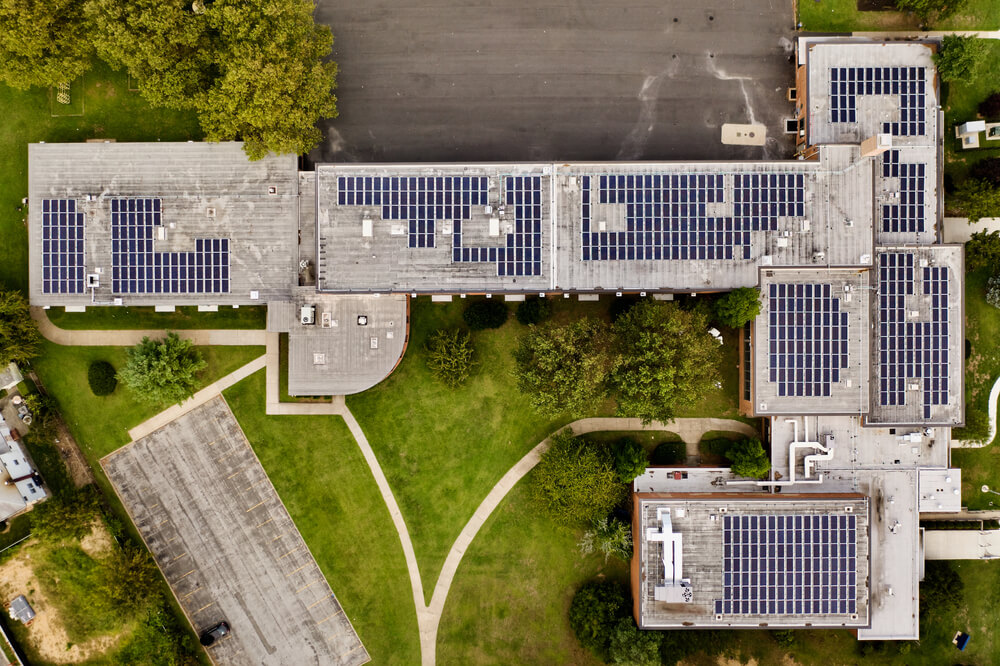ImpactAlpha, Aug. 15 – For Caelux Corp., investing in building a new solar factory outside Los Angeles was a no-brainer.
Tax credits in the Inflation Reduction Act, which turns one year old this week, will effectively refund a big chunk of the company’s operating expenses.
“If the Inflation Reduction Act had not been passed, I don’t think we would have a factory today,” Caelux’s Leslie Chang told ImpactAlpha. The Pasadena-based company spun out of CalTech to commercialize ways to use minerals called perovskites to boost the performance of silicon-based solar panels.
The sprawling legislation is accelerating investment decisions for battery plants, solar and wind power, and electric vehicle supply chains, even before most of the legislation’s billions of dollars in federal spending begin to flow. The bulk of the consumer-facing tax credits – for electric vehicles, solar systems, heat pumps and the like – have yet to be claimed. The tax credits will be available for decades to come, “creating massive investment opportunities for renewable technologies such as solar, wind and storage,” says the research firm Wood Mackenzie.
Companies have raced to get ready for the increased demand. More than $270 billion in private investment has poured into 80-some domestic clean energy projects and manufacturing facilities in the past 12 months – more than all such investments over the past eight years, according to the American Clean Power Association.
Singapore-based Maxeon Solar this week announced it would pump $1 billion into a 3- gigawatt solar factory in Albuquerque, New Mexico. US-based First Solar is building its fifth factory. South Korea’s Hanwha Q CELLS is investing $2.5 billion to expand production in Georgia.
The rapid uptake has bumped up initial Inflation Reduction Act, or IRA, projections. BloombergNEF analysts have twice revised renewable energy estimates upward.
The legislation includes a production tax credit to spur a domestic clean energy supply chain and extends an investment tax credit for advanced energy projects. Further incentives are awarded for projects that pay prevailing wages, use union labor, or are located in low-income communities.
Some manufacturers are expecting to recoup as much as half of their operating costs via the incentives.
In a note suggesting clients expand their holding of companies involved in the energy transition, JP Morgan analysts suggest renewable energy manufacturers that qualify for IRA subsidies could potentially double their profitability by 2025.
Caelux is among those that have caught the IRA’s tailwind. On the day the bill became law, the company got the green light from its anchor investor, Reliance New Energy. Caelux this week announced it has raised $12 million from Temasek, Reliance and other investors to build its Baldwin, Calif. factory and close out a Series A round.
The law “is beginning to spark an economic renaissance in communities that had been left behind,” Treasury Secretary Janet Yellen said at a visit to an electrical union in Las Vegas.
Deployment challenges
The building boom is creating its own challenges and bottlenecks.
It has not gone unnoticed that many of the new factories are located in states with representatives in Washington that didn’t – and still don’t – support the legislation that made the projects possible.
The boom is breathing fresh life into traditional manufacturing regions across the Midwest and South. Part of that stems from more lenient regulations and permitting laws, as well as cheaper labor.
State permitting rules have slowed some solar and wind projects, while others have been delayed by local opposition, sometimes funded by oil and gas interests. Even when they are built, project operators can wait months or years to be able to connect their generating capacity to the electrical grid. By one estimate, power producers waited a median five years to get connected.
“The beneficiaries of a lot of these dollars are red states that don’t give a damn about these issues, and they’re getting the projects,” California Gov. Gavin Newsom told The New York Times’ Ezra Klein. “We’re not getting the money because our rules are getting in the way.”
Grid capacity needs to expand by 60% by 2030 to meet carbon reduction goals, but despite bipartisan support, federal permitting reform has been elusive.
The Inflation Reduction Act contains 119 programs managed by multiple federal agencies. Some programs, like the IRA’s Greenhouse Gas Reduction Fund, have released eligibility requirements and rules for applying. Other guidance is still trickling out. The Treasury Department last week released rules for its low-income tax credits, but delayed ones for clean hydrogen production.
The IRA could create nine million jobs over the next decade, more than half in renewable energy, according to the Blue Green Alliance. That presents its own challenges, such as ensuring a supply of skilled workers to fill the positions.
Creating jobs in in “distressed” regions delivers at least 60% greater economic benefits than those in “booming” ones, said Yellen in Las Vegas. “It gives us a bigger bang for our buck.”
The Families and Worker Fund is looking to scale workforce training and quality jobs models. Climate-Resilient Employees for a Sustainable Tomorrow, or CREST, a partnership between Jobs for the Future and World Resources Institute, aims to train at least 25,000 US workers for clean energy jobs.
Caelux is working with technical and vocational schools, economic development agencies and nonprofits in Los Angeles to arm students with needed skills for well-paying jobs such as research technicians, line operators and laser specialists. Its factory is expected to employ up to 120 people over two shifts.
Community readiness
Projects and project developers will determine the shape of the historic deployment, as they work block by block in urban neighborhoods, rural towns and tribal lands across the U.S. To succeed, local project developers and government officials will need to navigate a thicket of incentives, financing structures, rules and regulations, permitting and approvals and local and national politics and politicians.
A number of organizations are mobilizing to help community leaders seize the historic opportunity. Invest in Our Future, a $180 million fund created by a handful of foundations, is making grants to local groups to help them apply for funds, site projects, obtain permits, train workers and engage communities.
The Milken Institute’s Community Infrastructure Center is connecting communities with public and private financing for local, green infrastructure projects.











